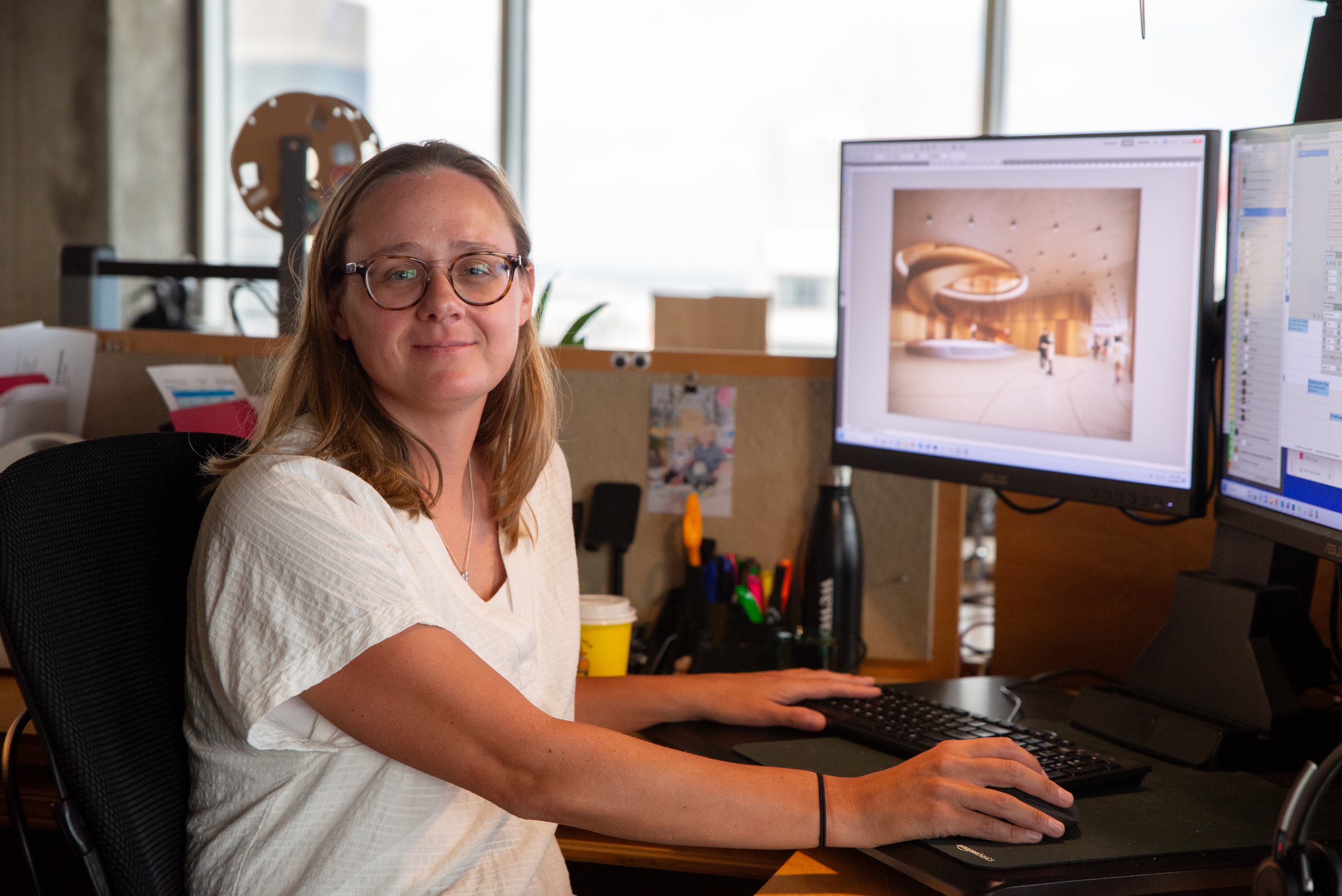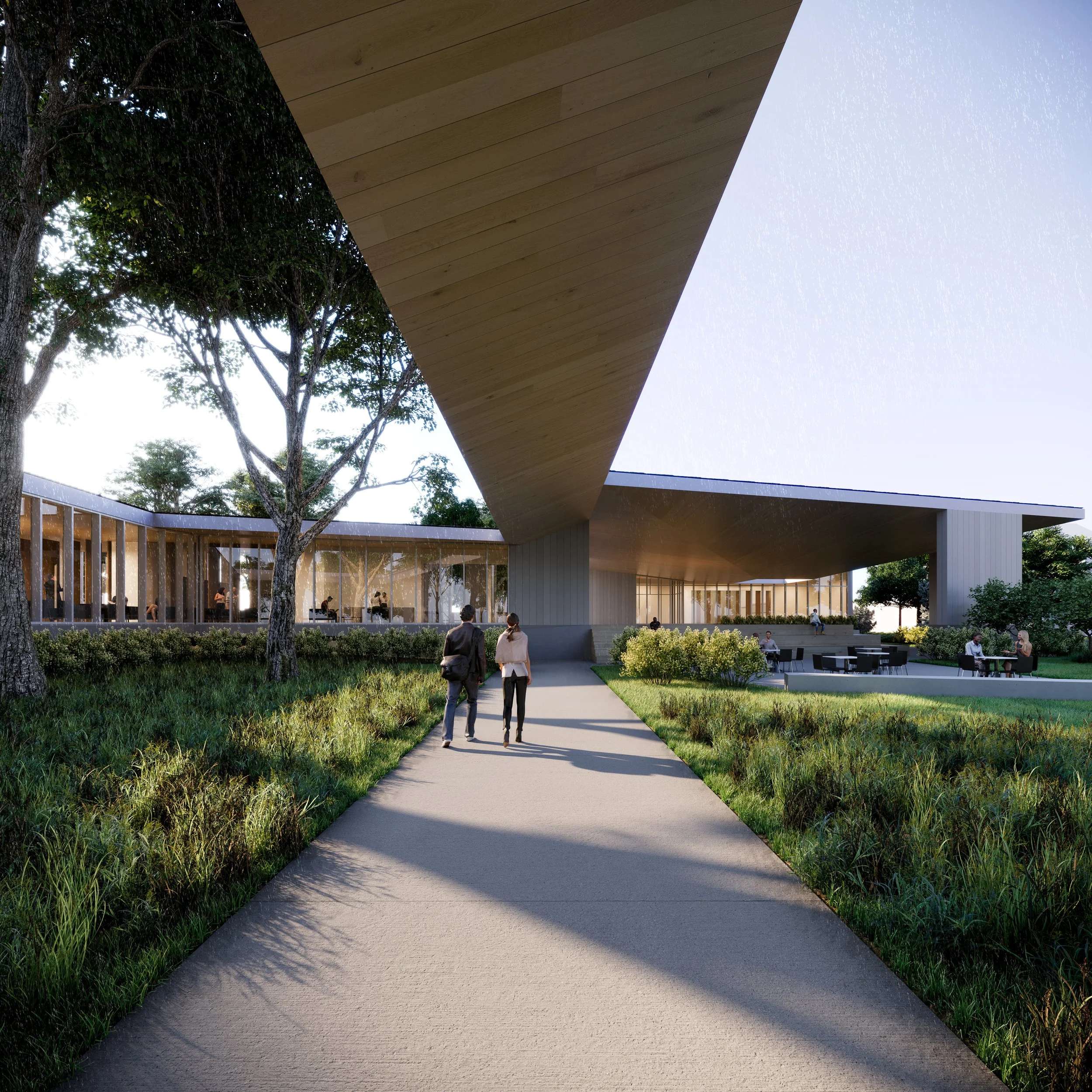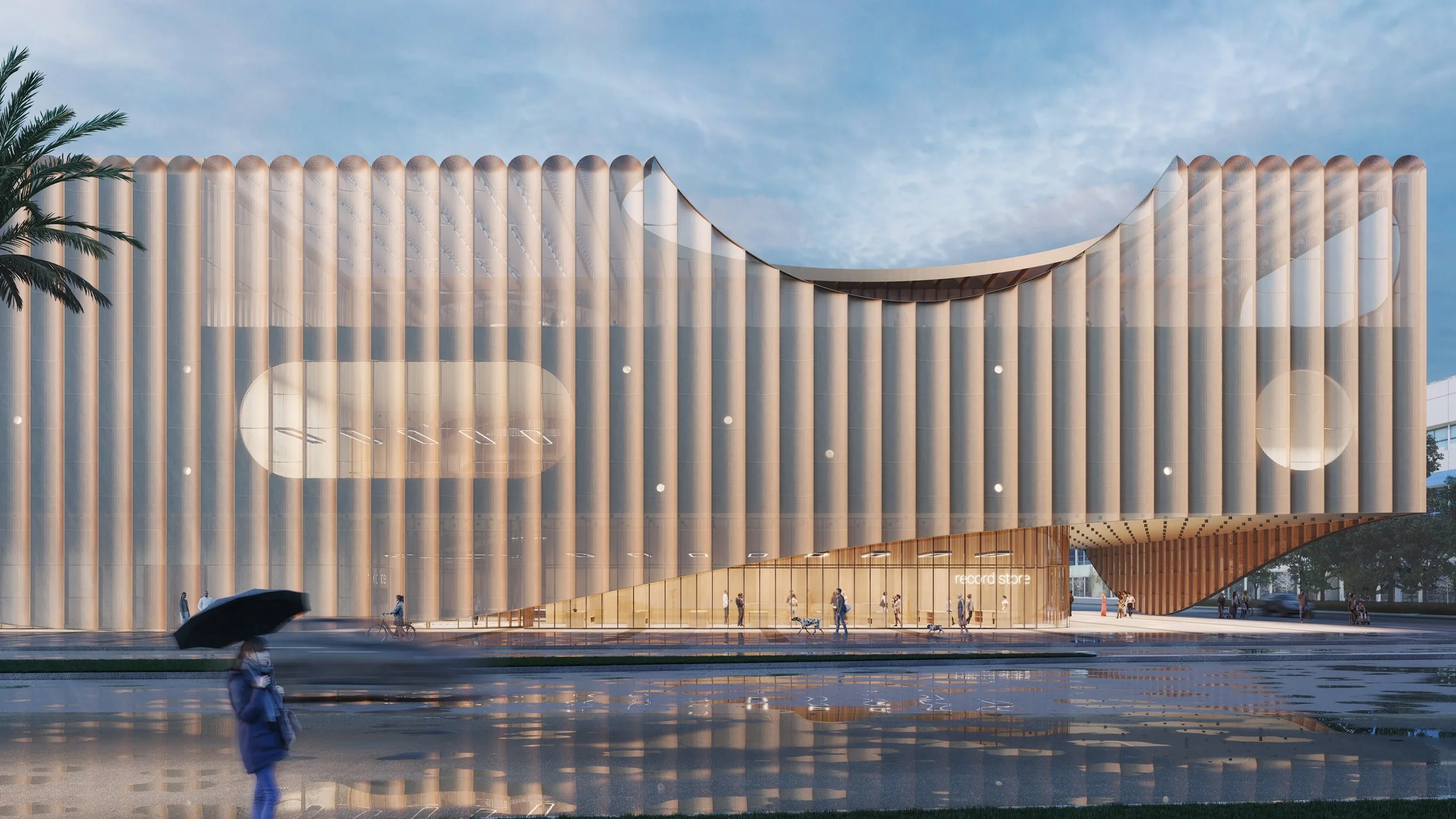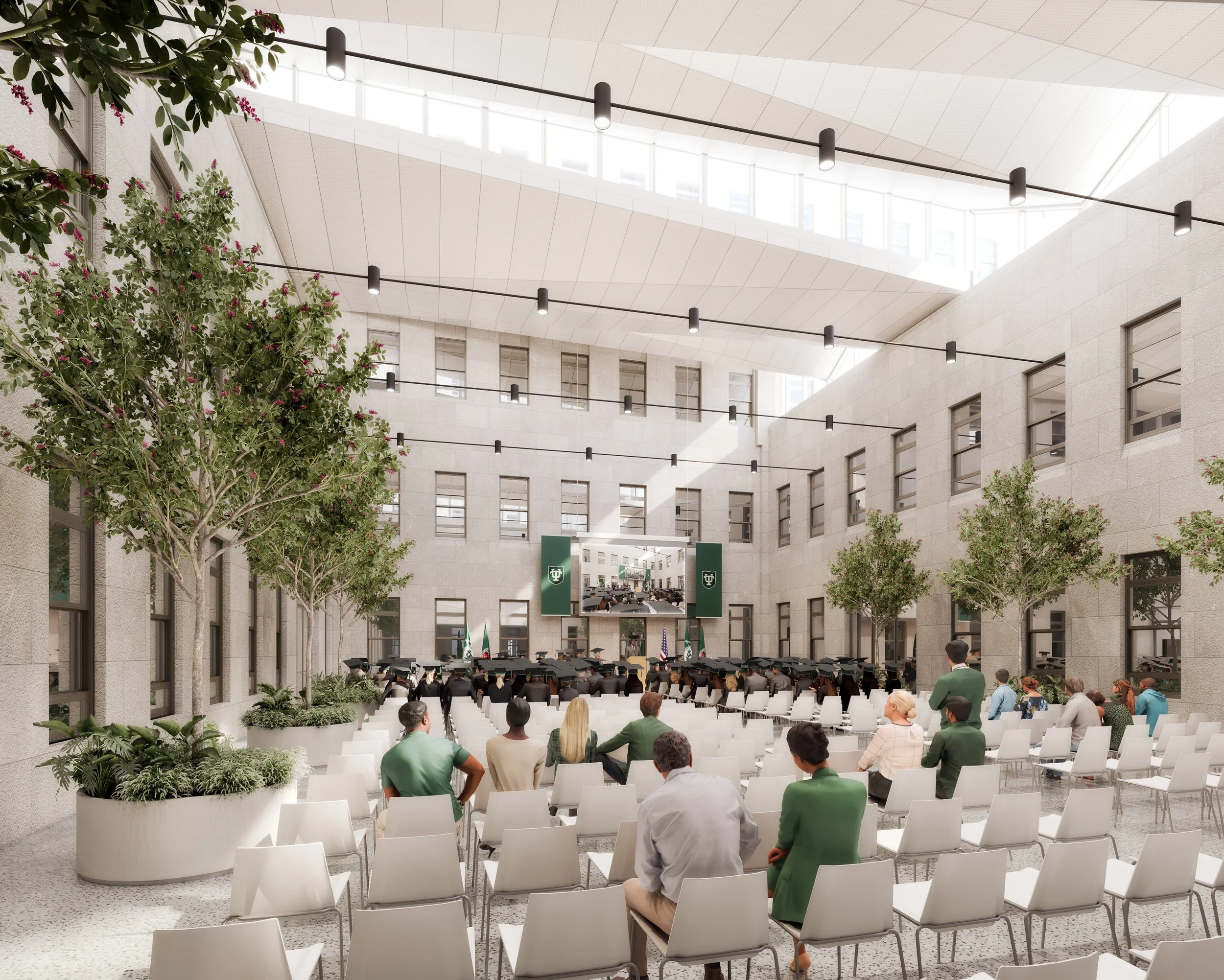Designers at Their Desk: Sheena Garcia

Sr. Visualization Specialist Sheena Garcia working at her desk in Studio 3150 in New Orleans, Louisiana.
For Sheena Garcia, her role as a senior visualization specialist is a daily practice in storytelling. She creates narratives through visuals that capture the essence of architectural designs. Whether it's the interplay of form, the movement of light, or the harmony of materials, Sheena understands that the renderings she creates can elicit certain feelings for both clients and architects, and this responsibility of communicating the pathos of a project is one that she takes on proudly.
Sheena’s journey to her current role is a testament to the power of both passion and specialization. After completing her undergraduate degree from the University of Michigan and her graduate degree from Princeton University, Sheena began her unique journey of learning about the art of visualization and architectural renderings.
University of Southern Mississippi Executive Education Center, Hattiesburg, Mississippi
During her time at the University of Michigan, Sheena was inspired by an installation created by a visiting architecture firm. This spark ignited her love for 2D collage work, a passion that she incorporated into her visualization projects. Her professional journey took her to various architecture firms in New York City, where she discovered that her true passion lay not in the bricks and mortar of buildings, but in the process of 3D renderings and visual storytelling.
"I've always been really interested in visualization in general, and, when I was in school, it was something that I kind of was always drawn to—the representation of architectural projects, more so than the architectural projects themselves," Sheena recalls.
Louisiana Music and Heritage Experience Museum in New Orleans, Louisiana.
It was at a marketing visualization-based firm that Sheena honed her skills and developed an appreciation for the art of architectural storytelling. "We were really big into this idea that the image has to tell a story, and that story is talking about the architecture," she explains. In collaboration with architects, Sheena crafts visuals that echo the architects' goals and aspirations for the project. Her work is a coordination between technical precision and artistic expression, resulting in images that speak volumes about the architect's vision. "You'll make an image, and you'll show it to the architects, and they'll say, 'Oh my gosh, you really captured what we were trying to do,'" Sheena says proudly.
The process of visualization is an intricate one, requiring a delicate balance of skills. Sheena takes us through her process, which begins with conceptual imagery that embodies the core ideas of the project. As the process unfolds, the imagery evolves, diving into the details that breathe life into the designs.
“You need all the people involved in the process to really help you make the image at the end," Sheena emphasizes, highlighting the collaborative nature of her work. Working in-house, she appreciates the ability to collaborate closely with designers, allowing her to integrate her craft into the architectural process.
Like most creatives, Sheena enjoys some parts of the process more than others, and, in Sheena’s opinion, lighting is the step that energizes the project into something transformative. "How you light something is almost more important than what it actually is because you can totally change the look of something through lighting," Sheena explains. She dives into the intricacies of the lighting process, describing how different lights are layered and manipulated to create a visual experience. She also explains about the evolving technology that empowers her to play with light in unprecedented ways, enhancing her ability to craft compelling visual narratives.
To explain the evolution of the visualization technology over time, Sheena tells the story of filmmaking and how the advancements of computer-generated imagery in movies helped pave the way for architectural technology. Iconic films like Terminator, Jurassic Park, and most Pixar classics were essential in allowing architects to harness the power of storytelling.
As technology continues to advance, Sheena remains rooted in the belief that the artistry of architectural visualization remains constant. "The artistry itself hasn’t changed that much," she notes. “We got through the struggles and obstacles with technology through sheer creativity, and what’s happening now is that computers are trying to get up to the artists’ level.”
Sheena rendering images of plans for the proposed Lousiana Music and Heritage Experience Museum in New Orleans, Louisiana.
Sheena cites the EskewDumezRipple studio as a supportive environment to flourish as both an artist and a collaborator. "Each person’s process is always accepted, always wanted, and always valid and always encouraged," she says with a smile. She appreciates the studio’s commitment to valuing each contribution, creating an environment where innovation thrives. “Everyone is allowed to kind of contribute what they have the knowledge to contribute and to work on everything in a way that makes it the best the project can be,” she says.
As Sheena brings her visualizations to life, her personal soundtrack varies. While Photoshopping sessions demand the rhythm of music, the intricate process of modeling requires podcasts. Currently learning about "60 Songs that Explain the 90’s," Sheena embraces music and other audio mediums as a creative companion in her artistic process.
At the core of Sheena's work lies the impact she leaves on her clients. She provides architects with a powerful tool to showcase their designs, allowing clients to understand their architectural dreams before they materialize physically. Her proudest projects, like the evolving Georgia Tech buildings that fellow architect Will Netter is helping create and the Pensacola Little Theatre, stand as testaments to her ability to breathe life into architectural visions.
Tulane Charity Hospital Reception Area in New Orleans, Louisiana.
Sheena’s contributions to the studio require both technical prowess and creative ingenuity, allowing her teammates to expand their creative visions and her clients to see their projects brought to life throughout the journey.





